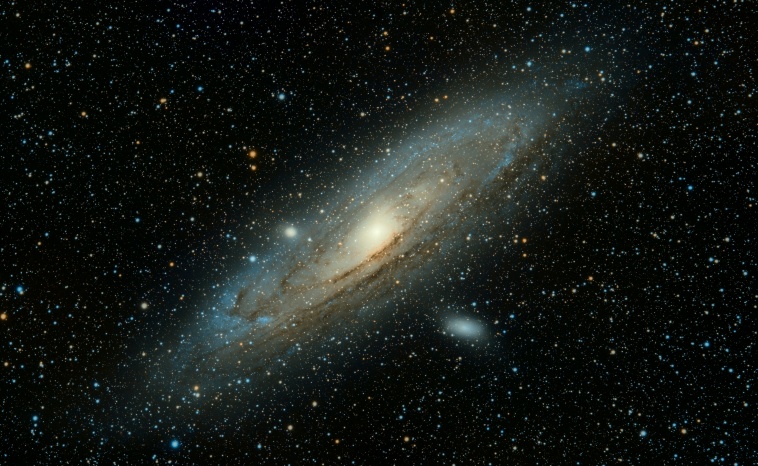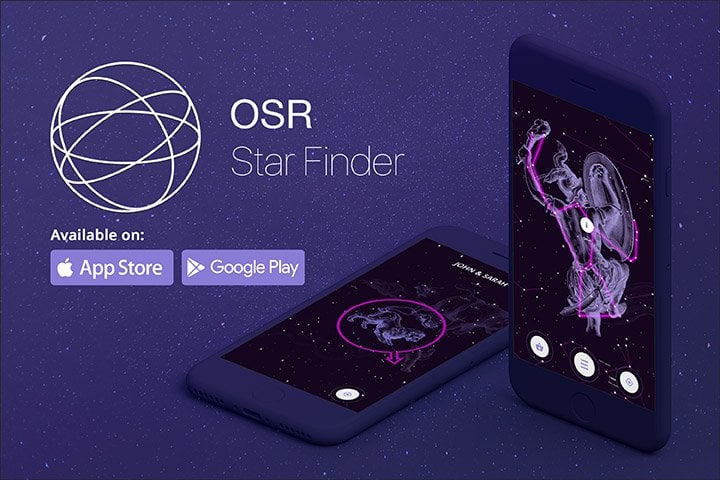Andromeda Galaxy: Everything You Need to Know

In this article, we’ll take a closer look at our nearest galactic neighbour – the fascinating Andromeda Galaxy.
If you’re reading this blog, there’s a good chance you’ve heard of the Andromeda Galaxy, the majestic spiral galaxy that resides in our cosmic neighbourhood. But how much do you know about our nearest galactic neighbour, this captivating celestial object that has captivated astronomers and stargazers alike? Well, in this article, we’ll aim to increase your knowledge of this fantastic feature of our night sky!
Join us as we embark on a cosmic journey to unravel the mysteries, delve into the intricate details, and immerse ourselves in the magnificence of the Andromeda Galaxy.
What Is the Andromeda Galaxy?

Located a mere 2.537 million light-years away (when considering the vastness of the universe, that’s practically next door!), the Andromeda Galaxy, also known as Messier 31 or M31, is the closest spiral galaxy to our own, the Milky Way. Spanning about 220,000 light-years, it’s a stunning celestial beauty that captivates astronomers and stargazers alike.
The Andromeda Galaxy is not only the closest but also the largest galaxy in the Local Group, an exclusive club that comprises around 54 galaxies in our cosmic backyard. As the largest member, the Andromeda Galaxy dominates this galactic group with its impressive size and gravitational influence.
The majestic galaxy features spiral arms filled with billions of stars, dust, and gas. Its central bulge houses a supermassive black hole, believed to have a mass equivalent to 140 million suns. The Andromeda Galaxy is also a hotbed of stellar activity, with countless star clusters, nebulae, and supernova remnants scattered throughout its expanse.
One of the most remarkable features of the Andromeda Galaxy is its sheer brilliance. It shines with such intensity that under ideal conditions, it can be visible to the naked eye from here on Earth, even in light-polluted areas.
Notable Features of the Andromeda Galaxy
The Andromeda Galaxy is an intriguing place, teeming with exciting features:
Size and Structure: The Andromeda Galaxy spans an impressive diameter of approximately 220,000 light-years, making it more than twice the size of our own Milky Way galaxy. With an estimated trillion stars illuminating its vast expanse, Andromeda outshines our galaxy’s comparatively humble count of 250 billion stars. Its sheer scale and stellar abundance truly make Andromeda a cosmic wonder to behold.
Andromeda’s Nucleus: Unlike our home galaxy, Andromeda showcases a mesmerising double nucleus, making it stand out among spiral galaxies. This distinct characteristic adds to the intrigue and fascination surrounding Andromeda, captivating astronomers and enthusiasts alike.
Satellite Galaxies: Andromeda is also accompanied by an entourage of 14 known dwarf galaxies gracefully orbiting around it, akin to planets encircling a radiant star. This mesmerising celestial dance highlights the vastness and complexity of our cosmic neighbourhood.
Recent Research Findings
As a fascinating and nearby object, research into the Andromeda Galaxy is ongoing and consistently yields fascinating results. According to NASA, the Milky Way and Andromeda galaxies are on a collision course, and they are predicted to collide in about 4 billion years. But don’t fret; it’s not as catastrophic as it sounds! While some stars and planets may collide, the galaxies themselves will likely merge and create a new, even larger galaxy.
Recent studies have also revealed that there are not just one but two massive black holes at the centre of Andromeda’s double nucleus. This discovery has led to further research into their formation and potential impact on the galaxy’s evolution.
Other findings suggest that the majestic Andromeda galaxy has transitioned beyond its celestial prime of star formation. This awe-inspiring cosmic entity now finds itself in a remarkable phase where the ethereal glow of dying stars outshines the birth of new ones, adding a profound sense of cosmic poetry to the tapestry of our universe.
Andromeda Galaxy Vs. the Milky Way

While there are many similarities between Andromeda and our Milky Way, such as both being spiral galaxies, some remarkable differences set them apart.
As mentioned earlier, Andromeda surpasses our galaxy in size, boasting a significantly larger scale and a greater number of stars. Notably, Andromeda also flaunts a double nucleus, further distinguishing it from our Milky Way. Moreover, while our galaxy proudly exhibits two major arms, Andromeda takes it up a notch with three magnificent arms, adding to its unique and captivating nature.
Could We Travel to the Andromeda Galaxy?
While the idea of travelling to the Andromeda Galaxy is undeniably fascinating, it remains a distant dream with our current technological prowess. Even using our most advanced propulsion technology, it would take millions of years to complete the journey.
However, this daunting temporal and spatial scale doesn’t dampen the insatiable human spirit of exploration and discovery. Instead, it fuels the quest for developing novel, faster-than-light propulsion technologies, such as the theoretical concept of a warp drive. This concept, although purely speculative at the moment, envisions bending the fabric of space-time to achieve superluminal travel, potentially making an intergalactic journey to Andromeda feasible. However, the development of such technologies lies far ahead in our future and requires overcoming monumental scientific and engineering challenges.
Nevertheless, even in the absence of a direct voyage, our telescopes and astronomical tools continue to probe Andromeda, gleaning valuable insights about this neighbouring galaxy, its past, its present, and its eventual, dramatic rendezvous with the Milky Way.
OSR Star Finder App

The Andromeda Galaxy is a remarkable object in our universe – a testament to the grandeur and mystery of the cosmos. So next time you gaze up at the night sky, spare a thought for our colossal neighbour, a silent sentinel watching over us from millions of light-years away.
Andromeda might be too far away for humans to explore right now, but thanks to the OSR Star Finder App, you can learn more about some of the stars of the Milky Way from the comfort of your smartphone! Simply download the app to your iOS or Android device and get ready to discover some of the fascinating stars, planets, and constellations visible in the night sky.

